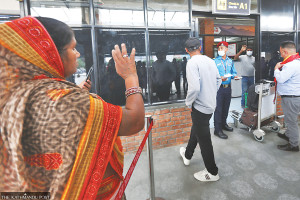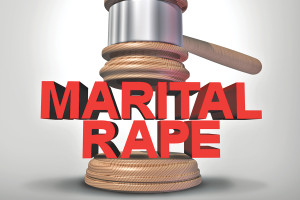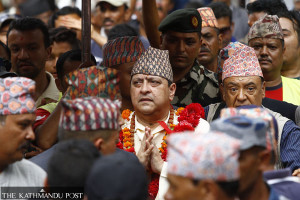 18.12°C Kathmandu
18.12°C KathmanduMiscellaneous
What has changed?
Over a decade has passed since the success of the monumental Jana Aandolan II.
Timothy Aryal
Over a decade has passed since the success of the monumental Jana Aandolan II. As an apt reminder to that historic event, there’s a play currently being staged at Theatre Mall, in the Capital. Titled Aandolan, the play, written by Saurav Karki and directed by Sudham Ck, explores the ripples the revolutions sent through the lives of its witnesses and participants.
The play itself should have been called not Aandolan, but rather a “glimpse” into the unintended effects—both on a personal and the societal level—that any political upheaval brings. The play, in fact, is very little about the Movement, or its roots and consequences but rather about what immediate changes the movement brought about in the lives of the play’s characters.

The play tells the story of three friends, all of whom are migrants in the Valley, living in a rented room. Set mostly in one of the character Sudham’s (played by Rear Rai) rental flat, Aandolan starts off with a light mood, inside a dingy room, where three friends and the landowner (played by Ingihopo Koinch Sunuwar) are engaged in a game of cards. The light mood quickly becomes heated as the group begin to converse about the ongoing Aandolan—protests against the King’s step to usurp the State’s power for himself—that has gripped the city. Among the four, two, Kumar and Sunil, are for the strikes, Sudham is indifferent, and the landowner believes that King is an avatar of Vishnu and hence, is not to be toppled, and that protests against him is by extension an affront to religion. Kumar, however, believes that there are only two places where the King is constant: “In a deck of cards and in the Britain.”

These three characters representing three different perspectives to the revolution more or less capture the divided and confused public opinion of the time. Sunil (played by Sijan Dahal), who we see donning a Bob Marley t-shirt, is an irascible young man, staunchly committed to rebelliousness, although the reasons are not immediately clear. While Kumar (Samyog Guragain) is more perceptive, who shares insights into politics and ideologies with his friends. On the other hand, Sudham, director Ck’s admitted alter ego, is just indifferent about the whole thing. The only two things that occupy his mind are Deepti, his love interest, and his family in the village. Representing characters with these diverse mind sets, Aandolan is strikingly relatable. The characters are not just superficial renderings but thoroughly layered, and we are allowed a peek inside their psyche.
Putting all this on stage, the cast offers a fine-tuned performance, with carefully allocated individual quirks and traits.

The sets, however, leaves one with a lot to be desired. It’s virtually an empty set; one wonders if a couple of book racks and cloth hangers would have given one a better sense of being inside a rented room, infusing the play with more authenticity.
At its heart, Aandolan is a minimalistic play, without any overt motifs to report, without any elaborate sets or larger-than-life characters—a streak that Theatre Mall has been on of late.
That lack of any definite motif, however, is also the play’s biggest drawback, leaving it more like an episode from the playwright’s diary rather than an in-depth exploration of a particular topic, and an important one like the Jana Anadolan II at that.
The producers have said that “if there’s one thing that the play does, it serves as a reminder to how politics play an integral role in our everyday lives and how youth’s involvement in politics can be crucial in any revolution.” But as hackneyed as that sounds, the theme is never fully explored in the play itself.
Regardless, Andolan comes off as a poignant staging. Right from the start, where we are led through a Television programme narrating the events of the political movment, the play successfully transports one back to the taut political and social tensions of the day.
Although Aandolan is not overtly concerned about the cause or the outcome of the momentous revolution, it can be interpreted as a work that subtly asks what has changed in our every day lives in these years. And if the lofty goals that we were touted at the dawn of the Republic have actually come true for the everyday folks; folks who are stuck killing time playing cards in dingy rented rooms in the expensive, unforgiving city.












.jpg&w=300&height=200)



